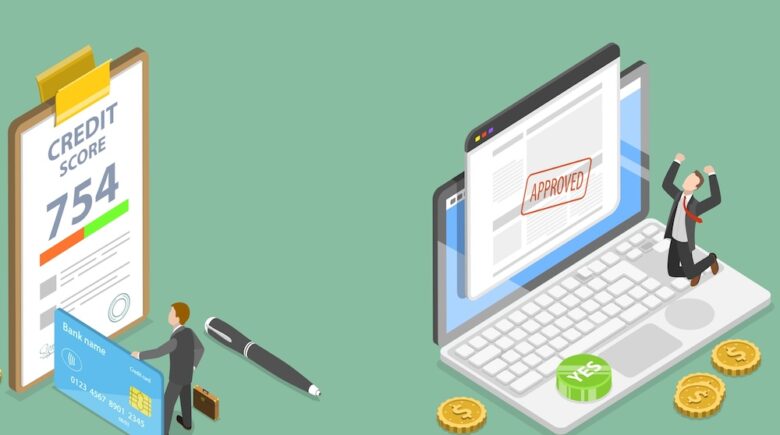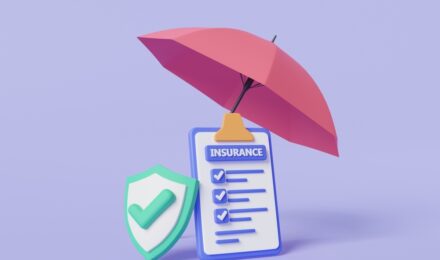Contents
A personal loan can help bridge financial gaps, whether consolidating high-interest debt, paying medical bills, or funding a major purchase. Yet with hundreds of lenders competing for attention, how can you tell which option is truly the best for you?
The reality is that not all loans are equal. Two borrowers with the same loan amount may pay vastly different total costs, depending on interest rates, fees, and repayment terms. This guide explains what makes a personal loan worthwhile, how to compare offers, and which mistakes to avoid—so you can borrow with confidence.
What Is a Personal Loan?
A personal loan is a fixed-term loan, usually unsecured, that allows you to borrow a lump sum and repay it in monthly installments. Most repayment terms range from 12 months to 84 months, with interest rates that reflect your credit history, income stability, and lender policies.
While the structure may sound straightforward, the details can be complicated. For example, a $10,000 loan at 10% interest over three years costs about $322 per month, with $1,616 paid in interest. Stretching the same loan over seven years reduces the monthly payment to $166—but raises the total interest to over $3,900.
Understanding this trade-off is crucial before signing any agreement.
How Personal Loans Differ from Other Credit Options
Many borrowers wonder whether a personal loan is better than using a credit card or tapping home equity. The answer depends on your goals:
- Compared to credit cards: Personal loans usually offer lower fixed interest rates and structured repayment, making them better for large balances.
- Compared to home equity loans: Home equity loans may have lower rates, but they put your home at risk. A personal loan is safer if you want unsecured borrowing.
- Compared to payday loans: Payday loans often carry APRs above 300%. A personal loan is far more affordable and less risky.
This context helps you decide whether a personal loan is the right tool—or whether alternatives may fit better.
Key Features That Define a Good Loan
When lenders advertise “low monthly payments,” it can distract borrowers from hidden costs. Instead of focusing only on the monthly figure, assess these elements together:
- Annual Percentage Rate (APR): Reflects interest and most fees, providing the best “apples-to-apples” comparison.
- Repayment Term: Shorter terms save money in the long run, but longer terms lower immediate payments.
- Fees and Penalties: Origination fees can reach 8% of the loan. Prepayment penalties limit flexibility.
- Eligibility Requirements: Some lenders cater to prime borrowers only, while others work with fair or poor credit applicants.
- Funding Speed: If you need funds within 24 hours, not all banks can deliver—online lenders often move faster.
A “good” personal loan is not universal. For a high-income borrower, the lowest rate may be priority. For someone repairing credit, flexible approval criteria may matter more.
Where to Get a Personal Loan
Borrowers today can choose between traditional lenders and digital-first platforms. Each has pros and cons:
- Banks: Offer stability and may provide relationship discounts, but tend to have stricter credit requirements.
- Credit Unions: Known for lower interest rates and member-first policies. Membership eligibility is required.
- Online Lenders: Provide fast applications, same-day decisions, and accessible approval for wider credit profiles. However, they may charge higher fees.
Pro tip: Always check whether the lender is licensed in your state and review complaints with the Consumer Financial Protection Bureau (CFPB) before applying.
When a Personal Loan Makes Sense
Borrowing strategically is the difference between financial relief and long-term debt. A personal loan is often the right move when:
- You want to consolidate multiple high-interest credit cards into a single lower-rate payment.
- You face a one-time expense, such as a medical bill, home repair, or moving costs.
- You need predictable monthly payments instead of fluctuating credit card balances.
However, using loans for vacations, luxury items, or routine spending often leads to regret. Ask yourself: “Will this purchase still hold value after I’ve finished paying off the loan?”
How to Find the Right Loan in Practice
Too many borrowers stop after the first approval, but comparison is where savings are found. Here’s a smart process:
- Check Your Credit First: Use free credit reports at AnnualCreditReport.com and correct errors. Improving your score even slightly can unlock better rates.
- Prequalify Without Impacting Credit: Many lenders offer prequalification with a soft credit pull. Use this to collect offers.
- Compare Total Loan Costs, Not Just Rates: Calculate the total repayment amount across different terms.
- Read the Agreement Carefully: Watch for mandatory insurance add-ons or hidden charges.
- Choose Based on Needs, Not Just Savings: For example, a slightly higher rate may be worth faster funding if you face urgent bills.
Common Mistakes That Hurt Borrowers
- Focusing only on the monthly payment: A lower payment over a long term can cost thousands more.
- Ignoring fees: A 5% origination fee on a $20,000 loan equals $1,000 lost upfront.
- Not shopping around: Studies show borrowers who compare at least three lenders save an average of $1,200 over the loan’s life.
- Borrowing the maximum amount: Just because you qualify doesn’t mean you should take the full loan offered.
Avoiding these mistakes helps you keep control of your finances instead of being trapped by them.
Final Thoughts
The best personal loan balances affordability, flexibility, and trust. The right choice depends on your credit profile, income stability, and financial goals. By comparing multiple lenders, understanding fees, and calculating long-term costs, you protect yourself from unnecessary debt while securing the funds you need.
In short: treat a personal loan as a tool, not a lifeline. With the right approach, it can improve your financial stability instead of undermining it.
References
- Consumer Financial Protection Bureau – Personal Loans
- Federal Trade Commission – Credit and Loans
- National Credit Union Administration – Consumer Resources
- Annual Credit Report – Free Credit Checks
Contents
A personal loan can help bridge financial gaps, whether consolidating high-interest debt, paying medical bills, or funding a major purchase. Yet with hundreds of lenders competing for attention, how can you tell which option is truly the best for you?
The reality is that not all loans are equal. Two borrowers with the same loan amount may pay vastly different total costs, depending on interest rates, fees, and repayment terms. This guide explains what makes a personal loan worthwhile, how to compare offers, and which mistakes to avoid—so you can borrow with confidence.
What Is a Personal Loan?
A personal loan is a fixed-term loan, usually unsecured, that allows you to borrow a lump sum and repay it in monthly installments. Most repayment terms range from 12 months to 84 months, with interest rates that reflect your credit history, income stability, and lender policies.
While the structure may sound straightforward, the details can be complicated. For example, a $10,000 loan at 10% interest over three years costs about $322 per month, with $1,616 paid in interest. Stretching the same loan over seven years reduces the monthly payment to $166—but raises the total interest to over $3,900.
Understanding this trade-off is crucial before signing any agreement.
How Personal Loans Differ from Other Credit Options
Many borrowers wonder whether a personal loan is better than using a credit card or tapping home equity. The answer depends on your goals:
- Compared to credit cards: Personal loans usually offer lower fixed interest rates and structured repayment, making them better for large balances.
- Compared to home equity loans: Home equity loans may have lower rates, but they put your home at risk. A personal loan is safer if you want unsecured borrowing.
- Compared to payday loans: Payday loans often carry APRs above 300%. A personal loan is far more affordable and less risky.
This context helps you decide whether a personal loan is the right tool—or whether alternatives may fit better.
Key Features That Define a Good Loan
When lenders advertise “low monthly payments,” it can distract borrowers from hidden costs. Instead of focusing only on the monthly figure, assess these elements together:
- Annual Percentage Rate (APR): Reflects interest and most fees, providing the best “apples-to-apples” comparison.
- Repayment Term: Shorter terms save money in the long run, but longer terms lower immediate payments.
- Fees and Penalties: Origination fees can reach 8% of the loan. Prepayment penalties limit flexibility.
- Eligibility Requirements: Some lenders cater to prime borrowers only, while others work with fair or poor credit applicants.
- Funding Speed: If you need funds within 24 hours, not all banks can deliver—online lenders often move faster.
A “good” personal loan is not universal. For a high-income borrower, the lowest rate may be priority. For someone repairing credit, flexible approval criteria may matter more.
Where to Get a Personal Loan
Borrowers today can choose between traditional lenders and digital-first platforms. Each has pros and cons:
- Banks: Offer stability and may provide relationship discounts, but tend to have stricter credit requirements.
- Credit Unions: Known for lower interest rates and member-first policies. Membership eligibility is required.
- Online Lenders: Provide fast applications, same-day decisions, and accessible approval for wider credit profiles. However, they may charge higher fees.
Pro tip: Always check whether the lender is licensed in your state and review complaints with the Consumer Financial Protection Bureau (CFPB) before applying.
When a Personal Loan Makes Sense
Borrowing strategically is the difference between financial relief and long-term debt. A personal loan is often the right move when:
- You want to consolidate multiple high-interest credit cards into a single lower-rate payment.
- You face a one-time expense, such as a medical bill, home repair, or moving costs.
- You need predictable monthly payments instead of fluctuating credit card balances.
However, using loans for vacations, luxury items, or routine spending often leads to regret. Ask yourself: “Will this purchase still hold value after I’ve finished paying off the loan?”
How to Find the Right Loan in Practice
Too many borrowers stop after the first approval, but comparison is where savings are found. Here’s a smart process:
- Check Your Credit First: Use free credit reports at AnnualCreditReport.com and correct errors. Improving your score even slightly can unlock better rates.
- Prequalify Without Impacting Credit: Many lenders offer prequalification with a soft credit pull. Use this to collect offers.
- Compare Total Loan Costs, Not Just Rates: Calculate the total repayment amount across different terms.
- Read the Agreement Carefully: Watch for mandatory insurance add-ons or hidden charges.
- Choose Based on Needs, Not Just Savings: For example, a slightly higher rate may be worth faster funding if you face urgent bills.
Common Mistakes That Hurt Borrowers
- Focusing only on the monthly payment: A lower payment over a long term can cost thousands more.
- Ignoring fees: A 5% origination fee on a $20,000 loan equals $1,000 lost upfront.
- Not shopping around: Studies show borrowers who compare at least three lenders save an average of $1,200 over the loan’s life.
- Borrowing the maximum amount: Just because you qualify doesn’t mean you should take the full loan offered.
Avoiding these mistakes helps you keep control of your finances instead of being trapped by them.
Final Thoughts
The best personal loan balances affordability, flexibility, and trust. The right choice depends on your credit profile, income stability, and financial goals. By comparing multiple lenders, understanding fees, and calculating long-term costs, you protect yourself from unnecessary debt while securing the funds you need.
In short: treat a personal loan as a tool, not a lifeline. With the right approach, it can improve your financial stability instead of undermining it.






